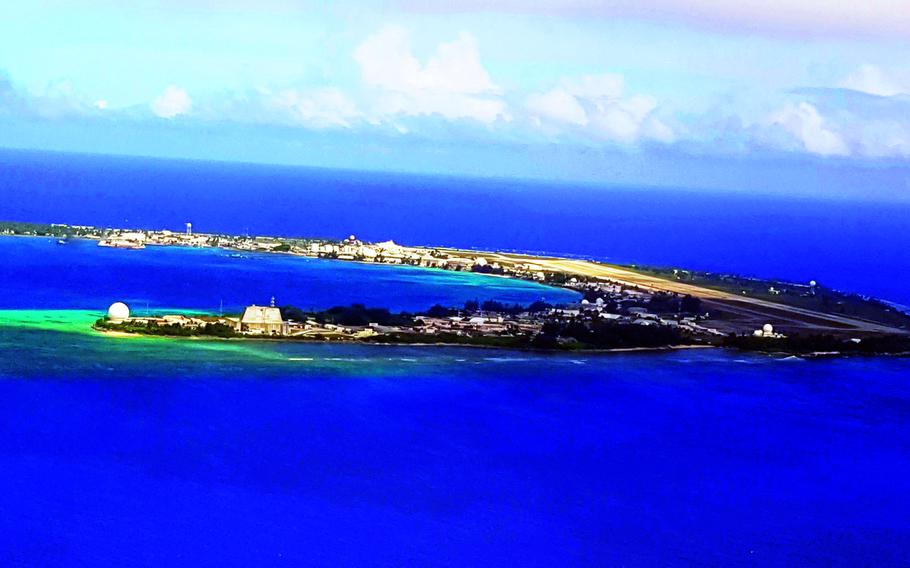
Kwajalein, a speck of an Army base in the Pacific Ocean, is home to the Ronald Reagan Ballistic Missile Defense Test Site and about 1,300 inhabitants. (Wyatt Olson/Stars and Stripes)
The Army is investigating the leak of about 380 gallons of a firefighting foam into the ground on Kwajalein Island in the Marshall Islands, Army Garrison-Kwajalein said in a newsletter published April 16.
The material contained small quantities of chemical compounds common in manufacturing called polyfluorinated substances, or PFAS, which are associated with certain forms of cancer and other adverse health effects.
The firefighting material, called aqueous film forming foam, leaked from 11 drums that had been stored in an “isolated warehouse” on the west end of the boomerang-shaped island since August 2020, Army Garrison-Kwajalein said in an email Thursday in response to a query by Stars and Stripes.
The leak was discovered by a contractor on March 22, but it remains unknown when the leakage occurred, the garrison said.
Kwajalein Atoll, a lengthy string of about 100 small coral islands, is roughly 1,600 miles from Guam and more than 2,000 miles from Hawaii.
The atoll’s Kwajalein and northern Roi-Namur islands are home to the Ronald Reagan Ballistic Missile Defense Test Site and the Air Force’s Space Fence, which tracks objects orbiting the earth.
The entirety of Kwajalein Island is essentially a military base administered by the Army garrison. About 1,300 Americans, mostly federal employees and contractors, live on the two islands.
PFAS have been used widely since the 1940s, but the health risks associated with exposure to the compounds are not fully understood, according to the U.S. Environmental Protection Agency.
“Current scientific research suggests that exposure to high levels of certain PFAS may lead to adverse health outcomes,” the EPA states on its website.
The island’s drinking water is safe, Col. Tom Pugsley, the garrison commander, wrote in the newsletter.
“Potable water has been tested regularly for the entire time period in which leakage could’ve occurred,” he said. “No contaminants were found, and all results were well below EPA guidelines and mirror what you would expect of any industrial area throughout the world.”
The island’s groundwater is routinely tested for contaminants, including PFAS. In a sample taken April 12, the most recent test, PFAS were detected at a level of 1.7 parts per trillion, the garrison said.
The EPA has set the acceptable level for PFAS in drinking water to no greater than 70 parts per trillion. Levels of PFAS in the eight tests of Kwajalein groundwater conducted since 2019 have never exceeded 1.8 parts per trillion, the garrison said.
In response the leak, monitoring of PFAS in drinking water will be increased from quarterly to weekly for the next six months, the garrison said.
“We plan to assess the assumed incident locations (in parallel to ongoing formal investigations) to determine the presence or absence of contamination and develop a removal action plan if required based on data collected through soil testing,” the garrison said in the email.